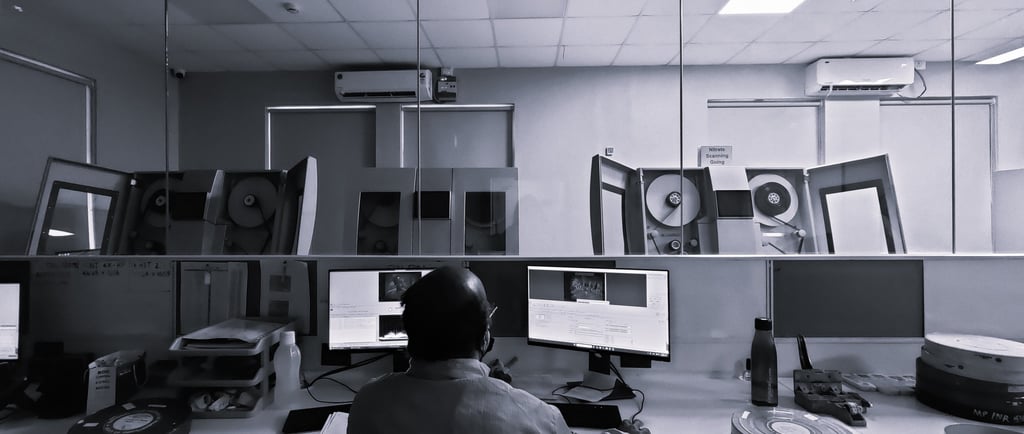Less is More: A Smarter Approach to Film Scanning
Can we make film scanning simpler and more effective?
Alice and Luca
3/4/20253 min read


Film scanning is a crucial step in preserving and restoring motion picture films. Since the introduction of digital technologies, archives and restoration experts have faced the challenge of transitioning from analog workflows to digital systems. The shift has brought both opportunities and complexities, often dictated by commercial scanning technologies rather than archival needs. So, how can we make this process simpler and more effective?
A Brief History: From Cineon to ACES
The introduction of the Cineon system in the 1990s marked a turning point in digital film preservation. Originally developed to digitize film materials and allow for digital color correction, Cineon paved the way for the Academy Color Encoding Specification (ACES). ACES is designed to manage digital image encoding and ensure color consistency across different platforms.


Today, most commercial film scanners rely on ACES and proprietary Look-Up Tables (LUTs) to convert negatives into usable digital files. However, this can introduce unintended alterations to historical film materials.
The Challenges of Film Scanning
Not all film scanners are created equal. The digitization process varies depending on the type of scanner, the sensor and optics technology, and the film material being scanned. Some key challenges include:
Proprietary Processing: Many scanners apply automatic image enhancements that are not always transparent.
Lack of Standards: Different archives and laboratories use varying workflows, leading to inconsistencies.
Historical Film Limitations: Modern scanning systems are optimized for contemporary film stocks and may not accurately capture the colors and tones of historical films.
Simplifying the Workflow
A major takeaway from recent research is that less processing can lead to better results. Instead of relying on automated LUTs and enhancements, a linear scanning approach can provide raw, unaltered digital copies of film materials. Here’s why it matters:
Greater Fidelity: Capturing raw data ensures that the original film characteristics remain intact (within the limits of the hardware, e.g., acquisition system).
Consistent Results: Linear scanning reduces variability between different scanning environments.
More Control: Post-processing adjustments can be applied manually, rather than relying on proprietary scanner software.
When to Use ADX and When to Avoid It
Many modern scanners employ the Academy Density Exchange (ADX) system, which simulates the appearance of a positive film print from a negative. While useful for contemporary film materials, ADX may not be suitable for historical films, as it applies color transformations based on modern film stocks. In cases where film provenance is unknown, applying ADX can result in misleading color representations.
For preservation purposes, the best approach is:
Use ADX when working with modern films where positive color appearance is known.
Avoid ADX for historical films to prevent unwanted alterations and ensure a more faithful representation.

A Smarter Approach to Film Preservation
By prioritizing linear scanning, archives can gain greater control over the preservation process. Instead of relying on proprietary enhancements, a standardized post-processing workflow allows for adjustments tailored to the specific needs of historical and cultural heritage films.
The bottom line? Less is more. Simplifying the film scanning process by reducing unnecessary image processing can lead to better preservation outcomes and more reliable digital archives.
References
Arrighetti W., “The academy color encoding system (aces): A professional color-management framework for production, post-production and archival of still and motion pictures,” Journal of Imaging, vol. 3, no. 4, p. 40, 2017.
Kennel G., “Digital film scanning and recording: The technology and practice,” SMPTE journal, vol. 103, no. 3, pp. 174–181, 1994.
Plutino A., "Color systems for motion picture film digitization: A critical review" (Open Access), Color Research and Application, 2024; 1-9, DOI: 10.1002/col.22946.
Plutino A., ""Less is More": How Understanding the Process of Motion Picture Film Scanning Can Make Your Life Easier" (Open Access), in Archiving Conference, 2024, pp 23 - 27, DOI: issn.2168-3204.2024.21.1.5
SMPTE, “St 2065-3:2020 - smpte standard - academy density exchange encoding (adx) — encoding academy printing density (apd) values,” ST 2065-3:2020, pp. 1–8, 2020.


© 2024. All rights reserved.
